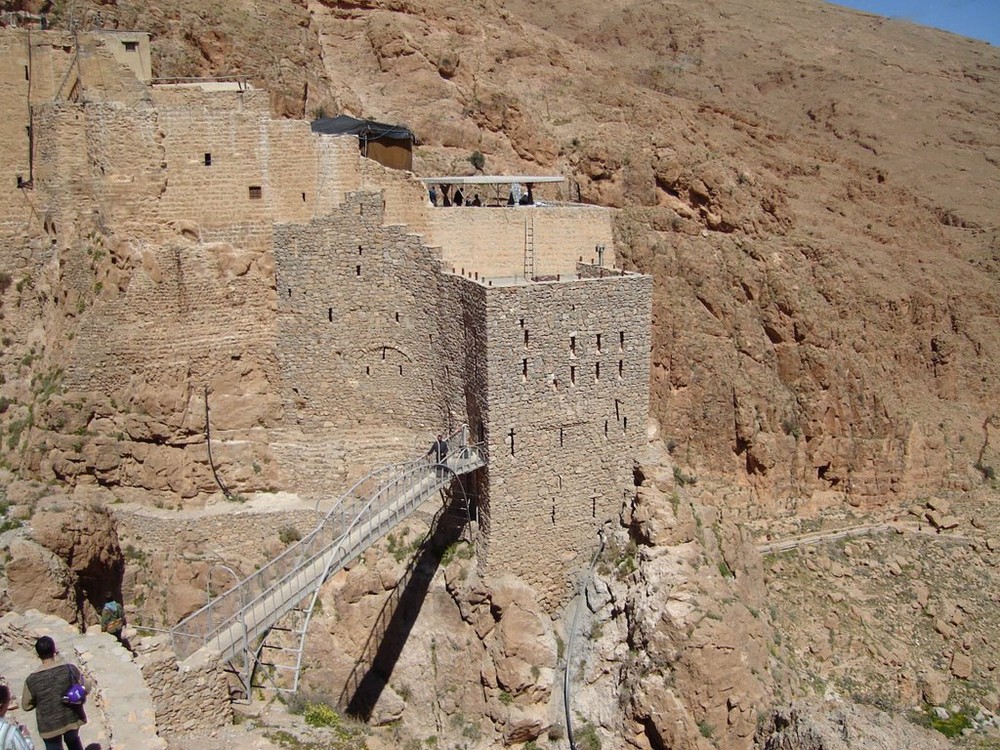St. Moses the Abyssinian
The ancient Syrian monastery of St. Moses the Abyssinian (Deir Mar Musa el-Habashi) overlooks a harsh valley in the mountains east of the small town of Nebek, 80 km north of Damascus, and about 1320 metres above sea level.
The area was first inhabited by prehistoric hunters and shepherds because of its natural cisterns and pastures ideal for herding goats. Perhaps the Romans built a watchtower here. Later, Christian hermits used the grottoes for meditation, and thus created the first small monastic centre.
According to local tradition St. Moses the Abyssinian was the son of a king of Ethiopia. He refused to accept the crown, honours, and marriage, and instead he looked towards the kingdom of God. He travelled to Egypt and then to the Holy Land. Afterwards, he lived as a monk in Qara, Syria, and then as a hermit not far from there in the valley of what is today the monastery. There he was martyred by Byzantine soldiers. The story says that his family took his body, but that the thumb of his right hand was separated by a miracle, and was left as a relic, now conserved in the Syrian church of Nebek.










Katrin MeGa 15/04/2008 21:58
That's very interesting for me - I didn't see it until now, but I know it is a very famous place. Good picture!LG Katrin